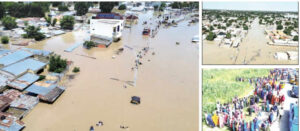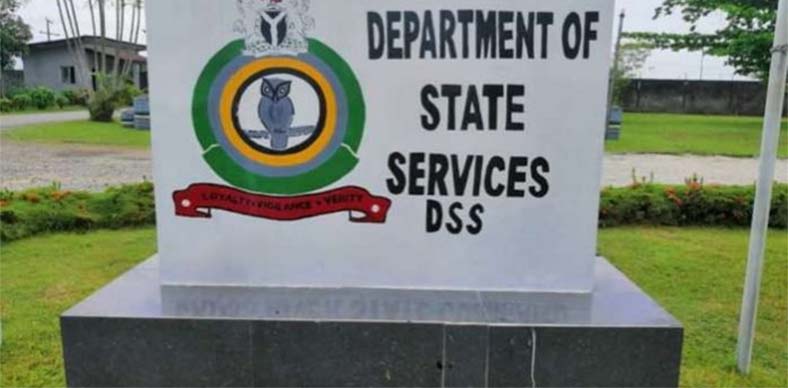Be ready for impending overflow of Rivers Niger, Benue – FG

As Nigeria continues to grapple with the aftermath of devastating floods in Maiduguri, Borno State, and other parts of the country, the Federal Government has issued an urgent warning about impending flooding along the Niger and Benue rivers.
The Minister of Water Resources and Sanitation, Prof. Joseph Utsev, issued the alert in Abuja on Friday during a press briefing on the flooding situation in Maiduguri.
He warned that a large volume of water was flowing through the rivers down to the Niger Delta region, stressing the need for heightened vigilance and proactive measures, particularly in southern Nigeria, to mitigate the effects of potential flooding.
Utsev attributed the flood disaster in Maiduguri and Jere areas of Borno State to the overflow of water from Alau Dam, located about 10 kilometres from Maiduguri city centre, due to a massive inflow from Ngadda River, a major tributary of River Yedzaram.
According to him, the 2024 Annual Flood Outlook publication by the Nigeria Hydrological Services Agency identified high, moderate, and low flood-risk areas across the country. Borno, Bauchi, Jigawa, Taraba, Yobe, Benue, Gombe, and several others are among the 31 states listed as high-risk areas.
“This flood disaster that affected Maiduguri and Jere areas was largely due to the overflow of water from Alau Dam, located about 10 kilometres from Maiduguri city centre, owing to massive inflow from Ngadda River, a major tributary of River Yedzaram. The Minister of State, Bello Goronyo, and I have visited Maiduguri, alongside the heads of agencies and parastatals in my ministry, to express solidarity with the governor of Borno State and to assess the extent of devastation caused by the flood,” Utsev said.
He added that a team of technical experts from the ministry, National Water Resources Institute, Nigeria Hydrological Services Agency, and the Chad Basin Development Authority were on the ground to assess the situation at Alau Dam and the extent of the flood disaster, with plans to make recommendations based on their findings.
“As we recover from this disaster, we must be mindful of the potential contamination of our water sources to avoid further outbreaks of waterborne and communicable diseases,” the minister warned.
As Nigerians mourned the losses in Borno, Yobe, Jigawa, Bauchi, and other states affected by flooding, Utsev called for vigilance as river flow levels on the Niger and Benue rivers had significantly increased, with indications of a red alert.
The minister further urged proactive measures to address potential flooding in southern Nigeria.
FG blames climate change
The Federal Government attributed the Borno flooding to the effects of climate change and prolonged heavy rainfall. Utsev noted that the Alau Dam did not collapse during the recent flooding, contrary to earlier reports. He reiterated that a flood risk warning issued earlier in the year had identified 31 states, including Borno, as high-risk areas.
According to the National Emergency Management Agency, the flood, which began on Tuesday, has claimed more than 30 lives and displaced over 400 people. Earlier reports had mistakenly attributed the flooding to the collapse of the Alau Dam in the Alau community of the Konduga Local Government Area.
In a statement by the Director of Information and Public Relations at the Federal Ministry of Water Resources and Sanitation, Funmi Imuetinyan, Utsev announced plans for an upgrade of the Alau Dam.
“We are committed to a thorough overhaul of this critical infrastructure. The Alau Dam upgrade is non-negotiable, and any poor performance by contractors or officials involved will not go unpunished. Sanctions will be enforced for any delays or substandard work,” he said.
The dam, constructed in 1986, has a maximum storage capacity of 112 million cubic metres and was designed to provide water for irrigation and domestic use in the state capital.
Saturday PUNCH gathered that this is not the first time flooding has been attributed to the collapse of the Alau Dam. In September 1994, approximately 400,000 people in Maiduguri were displaced by a flood caused by the dam’s collapse, which also destroyed crops and property in six states: Kaduna, Kebbi, Sokoto, Kwara, Katsina, Plateau, and parts of Cameroon. A similar event occurred in September 1999, prompting the operators of Kainji, Jebba, and Shiroro dams to open their gates to prevent dam overflow.
Earlier in the year, Dr Adeniyi Aremu, Managing Director of the Lower Niger River Basin Development Authority, North Central Nigeria, announced Federal Government plans to construct more dams nationwide for potable water supply and irrigation.
The Punch
| Join our new WhatsApp community! Click this link to receive your daily dose of NEWS FLASH content. We also treat our community members to special offers, promotions, and adverts from us and our partners. If you don’t like our community, you can check out any time you like. |









